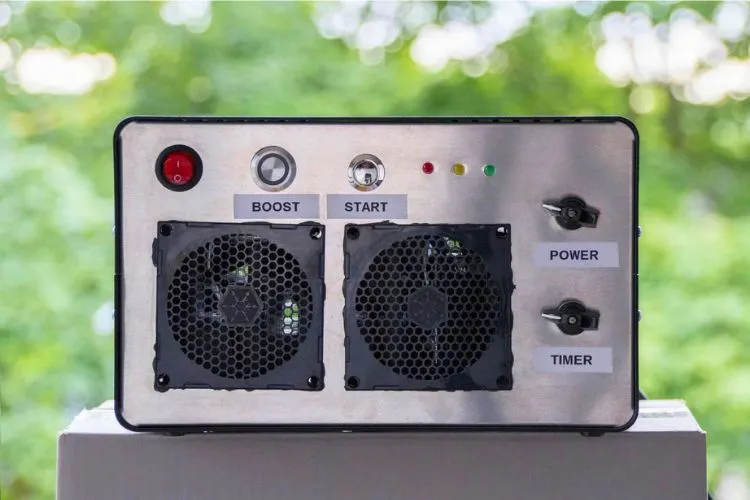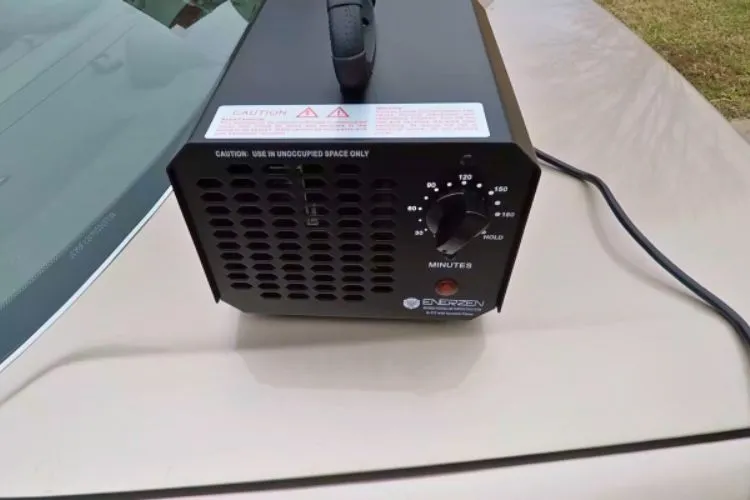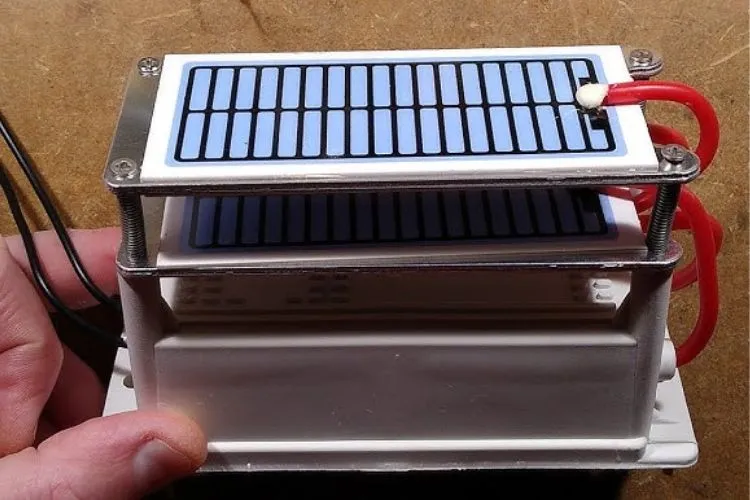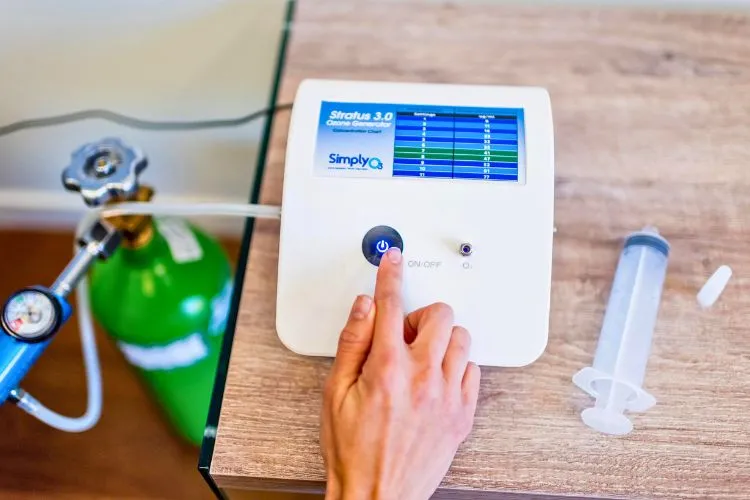Ozone generators have become a go-to solution for air purification and odor elimination in both homes and commercial settings.
Though effective, it’s crucial to use them safely, particularly knowing how long to wait after their operation before re-entering the treated space.
This article breaks down how long to wait after using an ozone generator, ensuring you reap the benefits of ozone without risking your health.

Understanding Ozone
Ozone is a gas composed of three oxygen atoms. It’s a powerful oxidant, often used to purify air and eliminate odors. However, its strength as a cleaning agent comes with risks if not handled with care.
How Ozone Generators Work?
Ozone generators produce ozone by breaking apart oxygen molecules, a process that can clean and deodorize air.
They are used in various settings, from homes to industrial spaces. Knowing how they work is key to using them safely.
Safety Protocols for Using Ozone Generators
Regulatory agencies like OSHA and the EPA set safe ozone levels to limit exposure and prevent health risks.

The primary safety protocol when using an ozone generator is to ensure the space is vacant.
Ozone can irritate the respiratory system, so people, pets, and even plants should stay away during treatment.
How Long to Wait After Using an Ozone Generator?
Several factors affect how long you should wait before re-entering a treated area. The size of the space, ozone concentration used, and the generator’s capacity all play roles.
Moreover, environmental conditions like temperature and humidity can influence ozone dissipation times.
Recommended Wait Times After Ozone Generation
General guidelines suggest waiting a minimum of two to four hours after a treatment session.
In cases of high ozone concentrations or larger areas, waiting up to 24 hours might be necessary. These times ensure ozone has dissipated to safe levels.
Ventilating the Treated Area
After waiting the recommended time, ventilating the area helps ensure all ozone residues are gone.
Open windows and use fans to encourage fresh air circulation. Proper ventilation speeds up the neutralization process, making the space safe for re-entry faster.
Post-Treatment Safety Checks
Before returning to a treated area, perform safety checks to ensure it’s free of ozone. While ozone has a distinct smell, its absence does not always mean the environment is safe.

Ozone detectors can provide a more accurate assessment. If ever in doubt, seeking professional air quality testing is a wise decision.
What to Do After Re-Entering?
Once back in the treated area, keep an eye out for symptoms of ozone exposure such as coughing or throat irritation.
If any symptoms occur, leave the area immediately and seek medical advice if necessary. This caution helps prevent potential health issues.
Pro Tips for Safe Ozone Generator Use
Always follow the manufacturer’s guidelines on using ozone generators safely. Using personal protective equipment when setting up and ventilating post-treatment is also recommended.
These practices ensure not just your safety but also the effectiveness of the treatment.
Common Mistakes to Avoid
A common mistake is underestimating the importance of vacating the space during and immediately after ozone treatment.
Also, disregarding manufacturer guidelines can lead to unsafe ozone levels. Prevent these scenarios by always adhering to safety recommendations.
Ozone Generator Maintenance and Upkeep
Maintaining an ozone generator is crucial for its safe operation and efficiency. Regular maintenance should include cleaning the ozone plates every six months to prevent buildup that can hinder performance.

It’s also essential to check and replace air filters as recommended by the manufacturer to ensure optimal airflow.
For troubleshooting, common issues include decreased ozone output, often due to dirty plates or clogged filters.
A sudden stop in operation might indicate a blown fuse or electrical problem, requiring a check of the power supply and connections.
Always refer to the manufacturer’s guide for specific maintenance routines and troubleshooting steps, and when in doubt, consult a professional to avoid mishandling that could damage the unit or pose safety risks.
You may also read: How Often Should My HVAC Be Serviced? An Honest Guide
Alternatives to Ozone Generators for Air Purification
When considering air purification, alternatives to ozone generators include HEPA filters, activated carbon, UV light purifiers, and electronic air cleaners.
HEPA filters excel in trapping particulate matter, pollen, and dust, but do not neutralize gases or odors. Activated carbon effectively absorbs smoke, chemicals, and odors, but may not address all pollutants.
UV light purifiers can destroy microorganisms like bacteria and viruses, but are less effective against particles or gases. Electronic air cleaners ionize air to remove pollutants but produce trace amounts of ozone.
Each technology has its pros and cons, varying in effectiveness, maintenance requirements, area coverage, and suitability for different pollutants. It’s vital to choose based on specific air quality concerns and sensitivities.
Frequently Asked Questions (FAQs)
How long does it take for ozone to dissipate?
Typically, ozone takes two to four hours to break down, but this can vary based on environmental factors and ozone levels.
Is it safe to run an ozone generator overnight?
Yes, if no one is in the space. However, allow ample time for ozone to dissipate before re-entering.
Can plants and animals remain in the space during ozone treatment?
Yes, ozone can degrade certain materials like rubber and some plastics. Remove sensitive items before treatment.
Can you smell ozone, and does its detection indicate safety or risk?
Ozone has a distinct smell similar to chlorine. While detecting it can indicate its presence, not smelling it isn’t a reliable indicator of safety.
What happens if you enter a room too soon after an ozone treatment?
Entering too soon can lead to respiratory irritation or other health issues due to ozone exposure.
How often can you safely use an ozone generator in a particular space?
This depends on the specific needs, but always allow for proper dissipation and ventilation between treatments.
Conclusion:
Ozone generators are a powerful tool for air purification and odor elimination. However, using them safely requires knowledge and caution.
By understanding how ozone works and adhering to recommended wait times and post-treatment procedures, you can ensure a clean, safe environment without risking health. Always prioritize safety guidelines and when in doubt, consult with professionals.
